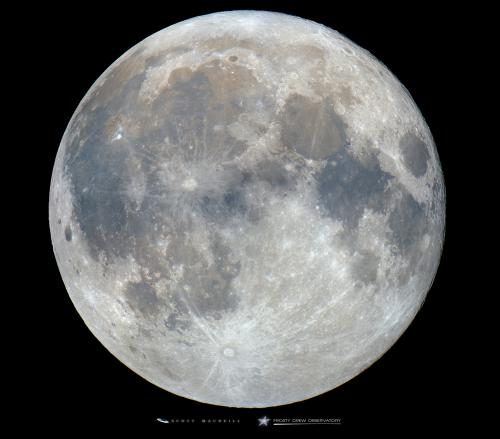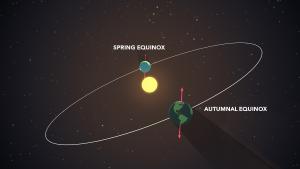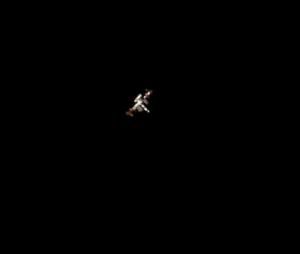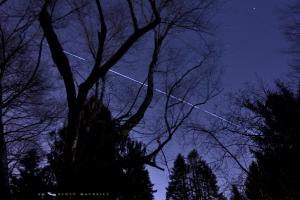Celebration of Space - March 18, 2022
At 3:21 am ET this morning, Friday, March 18, 2022, the Moon reached the point of opposition in its orbit around Earth. This is also known as the Full Moon. This full phase occurred with the Moon at a distance of 234,021 miles from Earth. Which places the Moon, roughly at its mid-point between perigee (closest point) and apogee (furthest point). So no super/mini moon for us this month. The March Full Moon carries the moniker The Full Worm Moon, of which the explanation would seem obvious as the worms are starting to enjoy their wet travels across roadways and sidewalks. Though the name of the March Moon dates back to Native American, and Colonial American times. There were probably not many paved roadways and cemented sidewalks at that time. A more realistic, yet less obvious description comes down to the beetle larvae that begins to emerge in the early spring. Which are quite wriggly and worm-like.
The March Full Moon also carries another moniker, similar to the Harvest Moon in autumn. If the March Full Moon occurs before the Vernal Equinox, it is referred to as The Lenten Moon. If it occurs after the Vernal Equinox, it is referred to as the Paschal Moon. But this doesn’t get the kind of craze that the Harvest Moon does. Regardless of what you call the March Moon, take note of the early morning sky after dawn, and you can see that the Moon will become increasingly visible during the daytime as it wanes towards the New Moon over the next couple of weeks.
On Sunday, March 20, 2022 at 11:33 am EDT, Earth’s equator will intersect with the ecliptic (the path the Sun takes across the sky) marking the Vernal Equinox, and the start of spring in the Northern Hemisphere. At this time, the Earth will arrive at the point in its orbit where it is neither tilted towards or away from the Sun. This results in an equal amount of day and night periods, with the Sun passing directly overhead (at zenith) when viewed along the equator at Noon. The Equinox also marks a switch in daytime length, to a period of the year where the days are longer than the nights. So take a moment mid-day this Sunday to step outside and welcome the mosquito pending, mud laden, pollen attack of spring, and take solace in the heat loving craziness that’s just around the corner, including beach days, late sunsets, picnics, and fabulous nights under the Milky Way – which kick in at Frosty Drew during early April.
Last week we wrote about the switch from Standard Time to Daylight Savings Time as something that was here to stay for now. Well this past week, the US Senate passed the Sunshine Protection Act, which formally declares Daylight Savings Time to become permanent. Meaning that we will no longer switch our clocks back and forth after November 2023, and will permanently remain on Daylight Savings Time (Eastern Daylight Time for us east coasters.) At this time, the passage of the bill is not law, as it still has to go before the US House of Representatives, and then signed into law by the Executive Branch. But it appears that a notable change to the twice-per-year clock change may be happening.
Evening passes of the International Space Station (ISS), and China’s space station (Tiangong), kicked in last week, and will continue into April. We generally see the stations pass over during the evening hours about two times per season. Outside of these windows of opportunity, the stations will make visible passes over our region in the early morning hours, or not at all visibly. Regardless of visibility, the stations do pass over our region every day. To see the stations, the spacecrafts have to be in direct sunlight while Earthbound viewers are in nighttime. This requirement exists because the stations, which orbit about 200 miles up, are too far for any light emitted by the stations to be visible, and what we see when observing a pass is sunlight reflecting off of the stations panels and labs. Observers can get a live view of this principle when observing the stations pass into orbital sunset. During that time, the station in view will orbit out of direct sunlight and enter Earth’s shadow (the Umbra), causing the stations to slowly wane from our view. Residents of the stations will experience sunset at this time. The changes in viewing periods come down to the inclination of the stations orbits. The ISS is inclined 51.6° to Earth’s equator, and Tiangong is inclined 41.6° to Earth’s equator. All that aside, here are some fantastic viewing opportunities for this weekend and coming week:
ISS:
Mar 18 at 7:33 pm, starting in the SSW, rising to 43°, heading towards the ENE
Mar 18 at 9:11 pm, starting in the W, rising to 28°, and into orbital sunset
Mar 19 at 8:22 pm, starting in the WSW, rising to 41°, heading towards the NE, and into orbital sunset
Mar 20 at 7:34 pm, starting in the WSW, rising to 65°, heading towards the NE ← Awesome pass!
Mar 21 at 8:24 pm, starting in the WNW, rising to 22°, heading towards the NNE
Mar 22 at 7:36 pm, starting in the W, rising to 29°, heading towards the NE
Mar 23 at 8:26 pm, starting in the NW, rising to 16°, heading towards the NNE
Mar 24 at 7:37 pm, starting in the WNW, rising to 18°, heading towards the NNE
Tiangong:
Mar 18 at 8:31 pm, starting in the WSW, rising to 51°, and into orbital sunset ← Awesome pass!
Mar 19 at 7:30 pm, starting in the SW, rising to 35°, heading towards the E, and into orbital sunset
Mar 20 at 8:04 om, starting in the WSW, rising to 73°, heading towards the E, and into orbital sunset ← Awesome pass!
Mar 21 at 8:40 pm, starting in the W, rising to 79°, and into orbital sunset ← Awesome pass!
Mar 22 at 7:38 pm, starting in the W, rising to 87°, heading towards the E, and into orbital sunset ← Awesome pass!
Mar 23 at 8:13 pm, starting in the W, rising to 88°, heading towards the E, and into orbital sunset ← Awesome pass!
Mar 24 at 7:47 pm, starting in the W, rising to 52°, and into orbital sunset ← Awesome pass!
There are certainly some amazing passes of Tiangong in store for us this coming week. Though dimmer than the ISS, it is still very visible, and these high altitude passes will look fantastic. The pass times listed are for Southern New England, and should be generally acceptable for the entire Northeast region. For a daily digest of pass times for the ISS, Tiangong, and other bright satellites visit the Frosty Drew Daily Satellite Pass Prediction Utility.
Have a Happy Vernal Equinox from all the astro-geeks at Frosty Drew Observatory and Science Center!
- Author:
- Scott MacNeill
- Entry Date:
- Mar 18, 2022
- Published Under:
- Scott MacNeill's Columns





